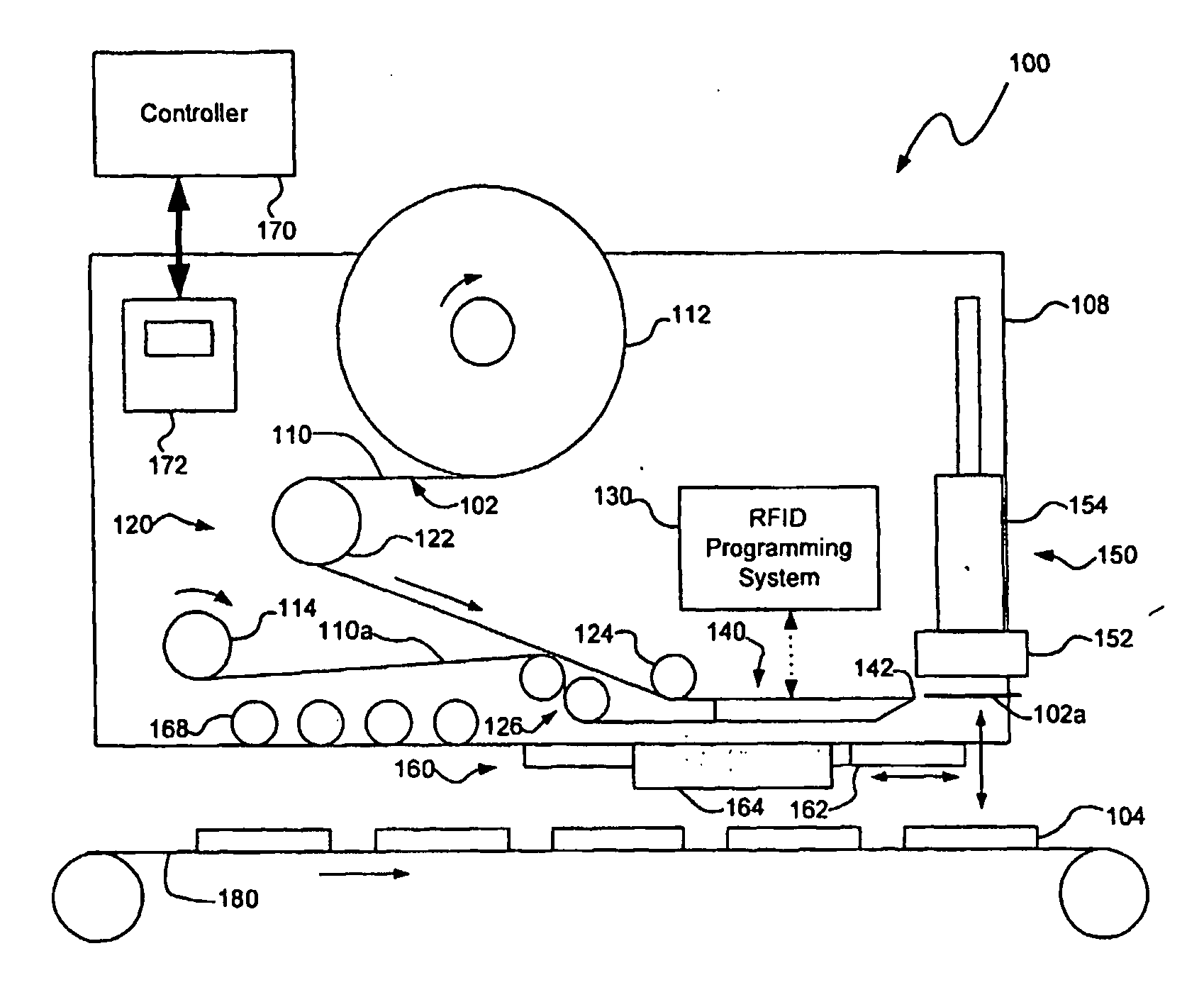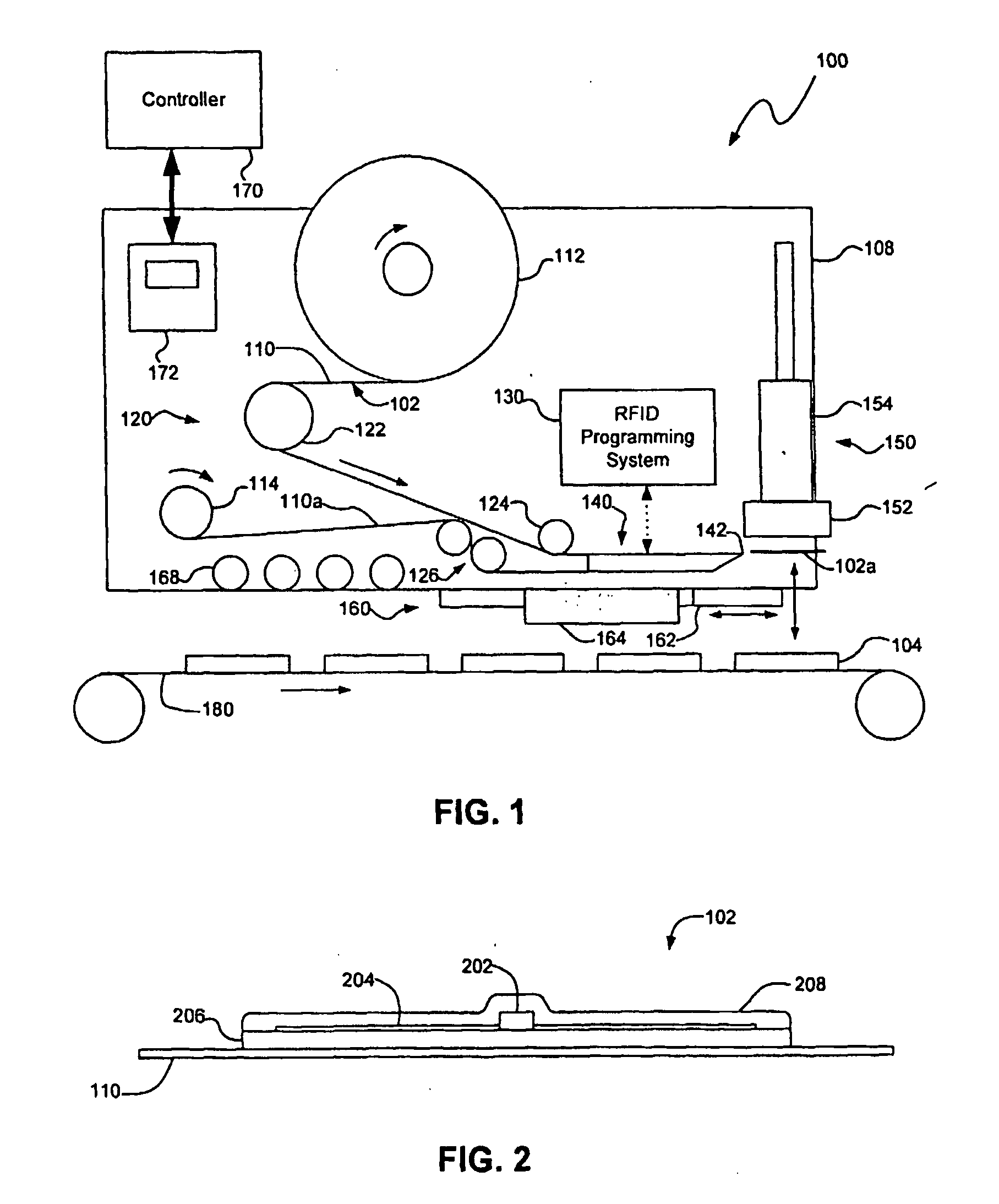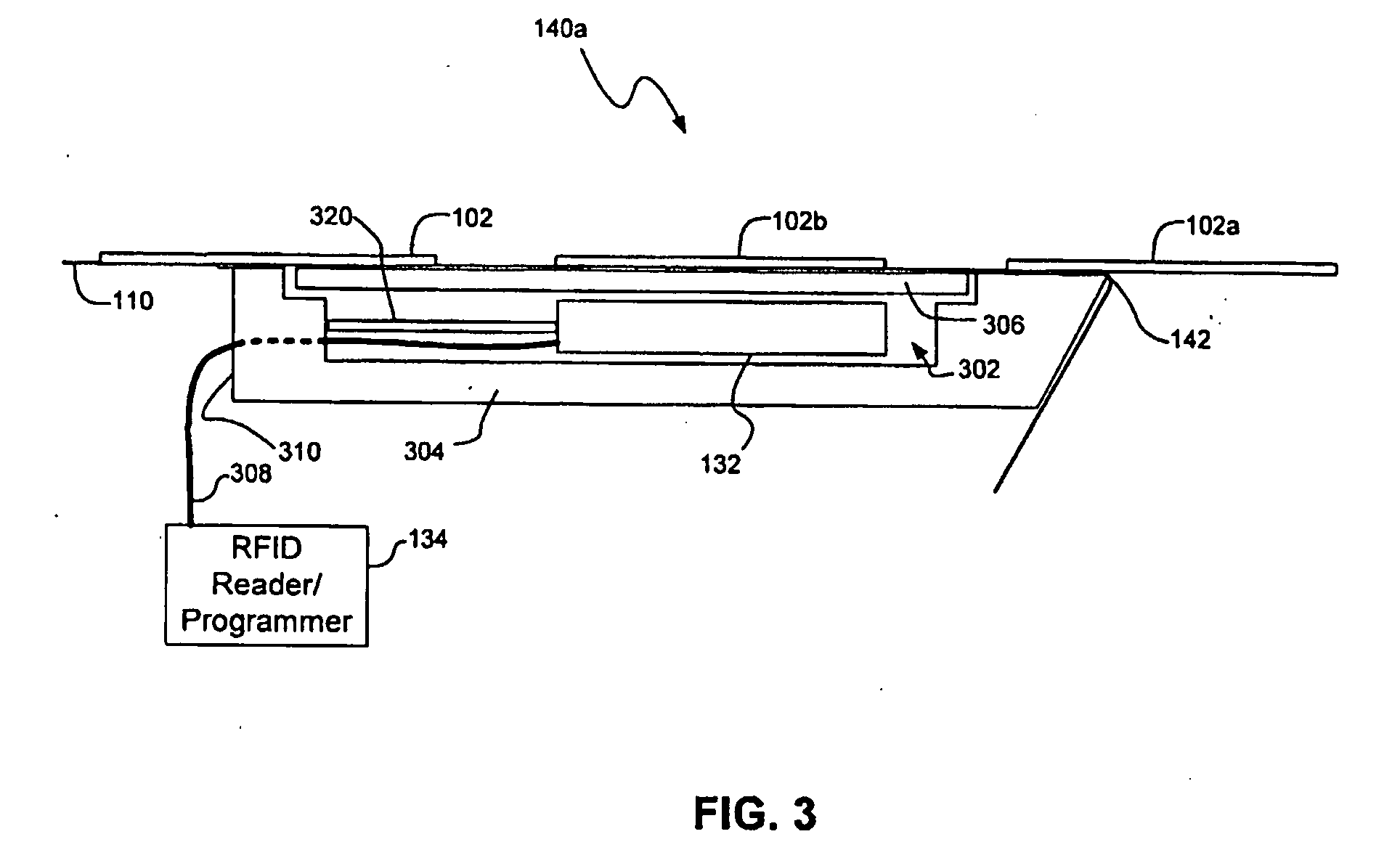Radio Frequency Identification (Rfid) Label Applicator
a technology of radio frequency identification and label applicator, which is applied in the direction of instruments, transportation and packaging, packaging, etc., can solve the problems of inability to apply labels to items or products, inconsistent number of labels between the point of detection and the point of rejection, and inability to detect defective labels
- Summary
- Abstract
- Description
- Claims
- Application Information
AI Technical Summary
Benefits of technology
Problems solved by technology
Method used
Image
Examples
Embodiment Construction
[0020] Numerous specific details may be set forth herein to provide a thorough understanding of the embodiments of the disclosure. It will be understood by those skilled in the art, however, that various embodiments of the disclosure may be practiced without these specific details. In other instances, well-known methods, procedures, components and circuits have not been described in detail so as not to obscure the various embodiments of the disclosure. It can be appreciated that the specific structural and functional details disclosed herein are representative and do not necessarily limit the scope of the disclosure.
[0021] It is worthy to note that any reference in the specification to “one embodiment” or “an embodiment” according to the present disclosure means that a particular feature, structure, or characteristic described in connection with the embodiment is included in at least one embodiment. The appearances of the phrase “in one embodiment” in various places in the specific...
PUM
| Property | Measurement | Unit |
|---|---|---|
| angle | aaaaa | aaaaa |
| peel adhesion strength | aaaaa | aaaaa |
| operating frequency | aaaaa | aaaaa |
Abstract
Description
Claims
Application Information
 Login to View More
Login to View More - R&D
- Intellectual Property
- Life Sciences
- Materials
- Tech Scout
- Unparalleled Data Quality
- Higher Quality Content
- 60% Fewer Hallucinations
Browse by: Latest US Patents, China's latest patents, Technical Efficacy Thesaurus, Application Domain, Technology Topic, Popular Technical Reports.
© 2025 PatSnap. All rights reserved.Legal|Privacy policy|Modern Slavery Act Transparency Statement|Sitemap|About US| Contact US: help@patsnap.com



